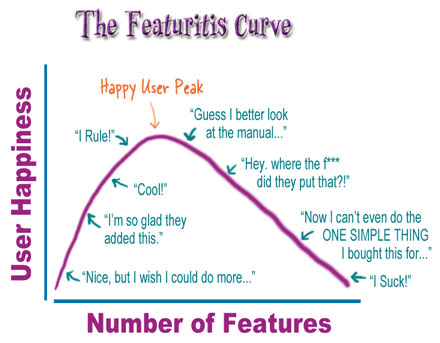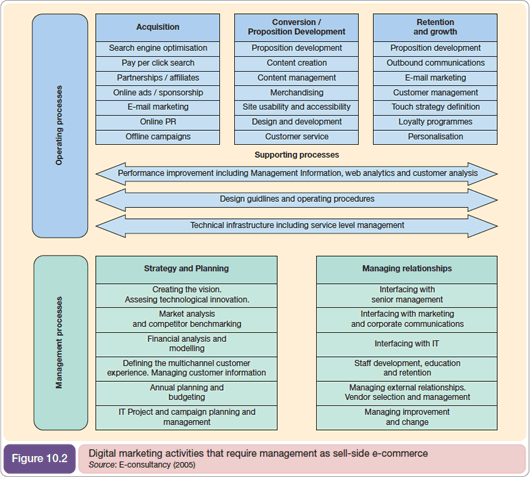Ecommerce Stagnation - what it is & how to fight it close
In Codegent College

a regular blogger for Econsultancy.
We all get to that point, two or three years after launching our ecommerce website, sales growth isn't want it used to be, new customer acquisition is faltering, the site has lost its "magic". Yet we're all terribly busy maintaining it. How did this happen? How did our wonderful source of revenue become well, stagnant?
Don't fear Stagnation
Stagnation is a natural part of any system lifecycle. After the initial jump in growth you experience after implementing a new ecommerce offering, your ability to sustain it is limited. The features and quick wins that you achieved are already out there, you focus on ensuring the visitors are catered for and most of your effort goes into the day-to-day operations of running your site. Coming up with the Next Big Thing is increasingly hard. Frequently more money is pumped into Marketing, vastly increasing your cost per acquisition because your site simply isn't converting like it once was.
However, when you realise your site has stagnated, this becomes a wonderful opportunity for change.
Featuritis
Featuritis is a symptom, rather than a cause of Stagnation. Featuritis is a term coined by Kathy Sierra, a prominent blogger on User Experience, to describe what happens to software when new features are continually added.

Thanks Kathy for allowing re-use of your work
She describes the point of the Happy User Peak, the point when there is just enough functionality to please the user, without leaving them wanting more, or conversely, reaching for the instruction manual.
However, after the initial stage of growth, it's very easy to get into the mindset of adding new features, sections and functionality to your site to help maintain the growth you've achieved.
Without pragmatism, not just from you but your Board, and quite importantly, your Helpdesk, you can easily find yourself responding to users' demands through continuous developments. Multiple exotic payment options, unnecessary wishlist & comparison pages, complicated delivery options and "me too" social media integration are just a few of the ways to add complexity that can frustrate a large percentage of your audience.
Operational vs Strategic
After successfully running an ecommerce operation for a year or so, it's easy to get stuck in the day-to-day operational tasks. Content creation (certainly for smaller shops), catalogue management, helpdesk management, can all make you lose site of the vision of your ecommerce store.

Econsultancy, back in the day, created an incredibly useful map of the tasks that need to be undertaken to run an ecommerce store. Taking the ACRA model - Acquisition, Conversion, Retention & Analytics - these can easily be carved into a series of remits for you and your team.
If you find yourself consistently working on the Operational side of the business, with no time to work on the Strategy & Planning, then we have a problem. Not only are you not keeping an analytical eye on your competitors, you are also unable to focus on your vision and drive innovation - a quick route to stagnation.
Don't be reactionary
So, you've sat down with your Board, and said "I think our site has stagnated". My aren't you brave! There's often a compelling urge to scrap everything and start again, to rebuild from scratch and let's do it better this time.
However this is not only costly, but unnecessary and dangerous. Within larger organisations a considerable amount has been invested in integration, certainly with fulfillment and CRM.
Remember when you conducted Stakeholder Interviews at the start of your project? Do it again with your Board. Find out what the current perceived failings are - these won't just be quantifiable like sales and average transaction value, but emotional failings as well. Once you know this, then you can work on how to improve it.
A platform's just a platform
I'm not sure if everyone will agree with me on this!
Ultimately, a platform is just a way of skipping over building a database, business logic and an API yourself. If you've chosen a platform, then you were probably sold on features, but the real issues such as cost, integration, administrative overhead and scalability were why you bought it.
But do your customers care one jot what platform you use? Does your platform choice directly affect the experience that they have? Of course not. Which is why in most cases, a few pragmatic steps is all that it takes to get you back on track.
1) Understand what matters
Why do people actually visit your website? Do you know? We'd love to think that they're there to Buy Buy Buy! but often that simply isn't the case. What's going through their minds? What's their motivation? Are you catering for this, not only in your site content but in your marketing?
If you'd like to read more about this, here's a post on user-psychology I wrote for Econsultancy.
Just as we measure Conversion Rate, we can also measure how often users are able to do what they came to your site to do - a "Task Completion Rate". Remember that not every visitor comes to your site to shop. Just as we do when we enclose a Checkout, when your visitor knows what they want to achieve, your site should get out of the way and let them do it.
There are a number of tools to let you measure Task Completion Rate - predominantly based around user surveys. The most popular is called 4Q from iPerceptions and takes the form of a pop-under survey.
You can then measure your Task Completion Rate amongst a sample of your visitors and see in which areas you can improve. You may of course, have a site that doesn't cater to your users' needs. They may be looking for a store finder, or an offers section, or something that isn't currently in your strategy. In which case...
2) Go back to your IA
During the information architecture process, you should have come up with 3-4 user personas, with needs and wants and clear goals and motivations. However, if your site is failing, then either a) the personas are incorrect (which can certainly happen when these aren't based on user research) or b) the personas aren't being catered for. Either way, when visitors use your site "in anger", they will become frustrated and leave.
Once you have catalogued the objectives and motivations of your user personas, you need to see how well your site fits these. If you don't feel that the site fits, or your personas are wrong, then you should conduct a new round of user research. I always recommend doing this in the user's homes, so you can see the environment in which they interact with you, and the discussion becomes more of a "chat" than a survey, but this isn't always possible.
3) Simplification
Once you have a newly defined set of goals and objectives, you can simplify your site design to cater to these. John Maeda has a wonderful book called the Laws of Simplicity in which he states 10 (well, 9) laws that you can apply to any design or process to make it simpler. For example, whilst you can't remove elements that some users may find useful, you can Hide or Shrink them in the design. You can use this process to not only rationalise your product taxonomy, but also rationalise your language.
A case in point here, on a site I once worked on we had 12 different methods of getting help, none of which were labelled "Help".
4) Take time out
Pause, breathe and have a sit down.
As I said before, when you hit this point, it's very easy to run around, firing & hiring agencies and switching platforms in an urge to have something new. You can do this, sure, but it's not very Strategic is it? You need to take a little time out.
5) Visit some aliens
Go and visit another ecommerce operation, that has nothing to do with your business. You'll see that they have the same processes as any other business, a helpdesk, customer returns, a CRM strategy - but by doing this you can not only gather ideas, but share skills and see how their success can be adapted for you use.
6) Think strategically
Work out what makes you money. Start from "we receive money from our customers by" and work backwards from there. Look at your net margin, and what's actually driving value. See how you can align this with your customer's objectives, simplifying the process and creating an engaging experience, and you're onto a winner.